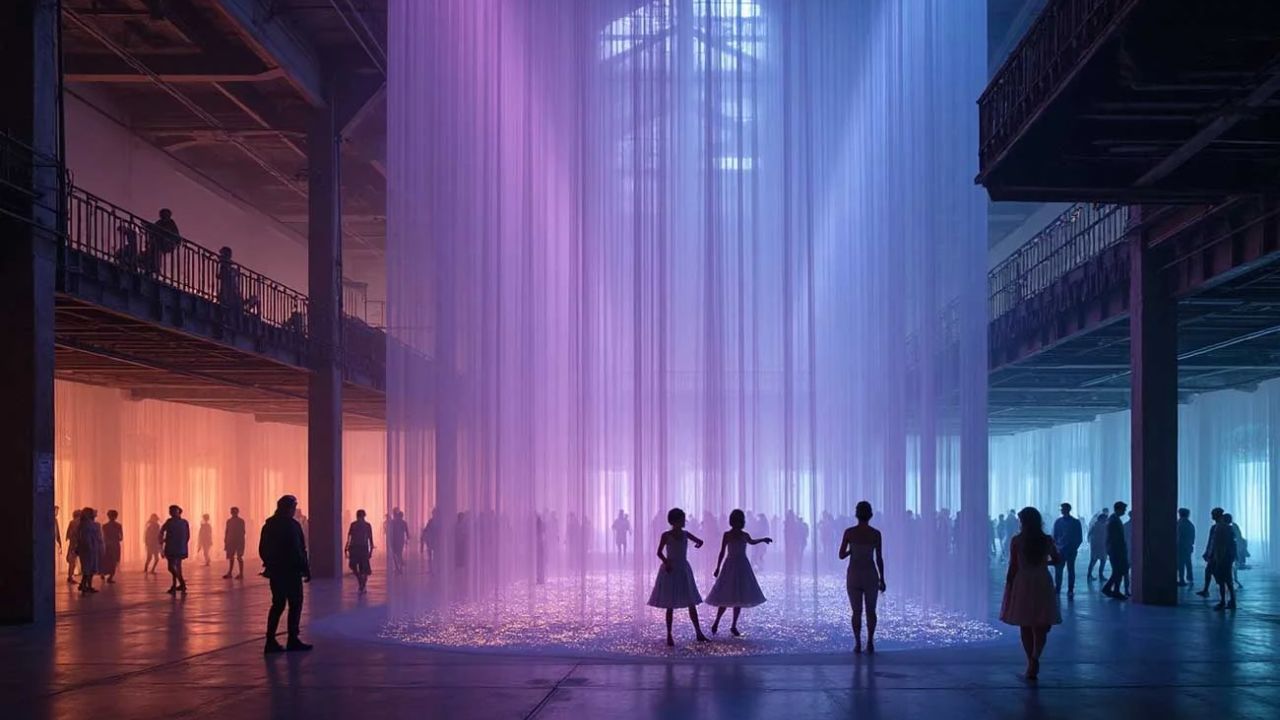In the rapidly evolving world of virtual engagement, a new term is taking shape spaietacle. This innovative concept combines spatial design and spectacular visuals to create immersive experiences that transcend traditional media. From virtual art galleries to cutting-edge brand activations, spaietacle is revolutionizing how we interact with digital environments.
What is Spaietacle?
At its core, spaietacle blends two powerful ideas: space and spectacle. It refers to an immersive, often interactive, visual experience that fills a digital or physical environment. Unlike simple visuals on a screen, a spaietacle surrounds the user pulling them into a fully realized world where they can explore, react, and even influence the content around them.
These environments are often powered by technologies like VR (Virtual Reality), AR (Augmented Reality), and 3D rendering engines. But beyond the tech, the goal of a spaietacle is to make users feel — to engage all their senses in ways that static or 2D media simply can’t.
The Origins and Growth of Spaietacle
The concept of spaietacle is relatively new but finds its roots in the intersection of digital art and interactive technology. It gained momentum as creators began to experiment with more immersive digital storytelling — moving beyond traditional screens and into virtual environments.
In the past decade, industries from gaming to marketing have looked for new ways to capture attention. The spaietacle emerged as a response to that demand: dynamic, interactive, and unforgettable. Today, it’s not uncommon to see museums, brands, and content creators designing spaietacles to attract and retain audiences.
Key Features That Define a Spaietacle
To understand what makes a spaietacle different from standard digital content, let’s look at its defining characteristics:
1. Immersive Environments
A spaietacle surrounds the user in a fully designed space. This could be a virtual museum, a 3D product showroom, or even a fantasy world built for storytelling.
2. Interactivity
Unlike traditional media, spaietacles invite the user to engage — touch, move, explore, and influence the narrative.
3. Visual Grandeur
The “spectacle” element ensures the experience is visually stunning — filled with animations, effects, and design that dazzle.
4. Cross-Platform Access
Many spaietacles are designed for mobile, desktop, and VR devices, ensuring a broad reach without sacrificing immersion.
How Spaietacle Is Used Across Industries
The application of spaietacle experiences spans multiple fields. Here are a few notable examples:
1. Art and Exhibitions
Digital artists now use VR headsets and projection mapping to create spaietacle installations in galleries — where viewers can walk through a painting or interact with digital sculptures.
2. Entertainment and Gaming
Game designers are integrating spaietacle principles to enhance user engagement, building worlds that players don’t just see but live in.
3. Branding and Marketing
Forward-thinking brands use spaietacles for product launches, allowing customers to “step inside” a virtual store or explore a 360-degree product showcase.
4. Education and Training
Interactive spaietacles are now used for remote training and virtual classrooms, making learning more immersive and engaging.
Creating Your Own Spaietacle Experience
For businesses and creators looking to embrace this trend, developing a spaietacle involves creativity, planning, and the right tools. Here’s how you can get started:
Step 1: Define the Story
Every spaietacle should be centered around a compelling narrative — whether educational, emotional, or promotional.
Step 2: Choose the Platform
Decide if the experience will be delivered through VR, AR, web, or mobile. Each medium has different technical requirements and audience expectations.
Step 3: Use the Right Tools
Software like Unity, Unreal Engine, or WebXR frameworks can help you build high-quality, interactive environments.
Step 4: Focus on User Experience
The success of a spaietacle depends on how users feel. Ensure smooth navigation, visual appeal, and responsive design for maximum engagement.
The Future of Spaietacle
As technology evolves, the potential for spaietacle experiences grows even more exciting. Here are a few trends that will shape its future:
-
AI-Powered Worlds: Using artificial intelligence to generate real-time, adaptive environments tailored to each user.
-
Holographic Spaietacles: Emerging hologram tech could bring spaietacles into the physical world, merging virtual with real.
-
Blockchain Integration: With NFTs and virtual ownership, users may one day own pieces of a spaietacle, creating a new economy for digital experiences.
Why Spaietacle Matters in Today’s World
In an age of short attention spans and constant content consumption, spaietacle offers something more — presence. It transforms digital interaction from a passive act into a deeply engaging journey.
Whether used for entertainment, education, or marketing, the spaietacle is proving to be one of the most effective ways to leave a lasting impression on audiences.
Conclusion: Spaietacle as a Creative Revolution
The rise of spaietacle marks a powerful shift in how we create and consume content. It’s not just about watching anymore — it’s about experiencing, interacting, and connecting in spaces that feel alive. As digital landscapes continue to evolve, the spaietacle will lead the way in redefining human interaction with technology.
For creators, brands, and educators alike, embracing the spaietacle means stepping into the future of engagement — where innovation meets imagination.

